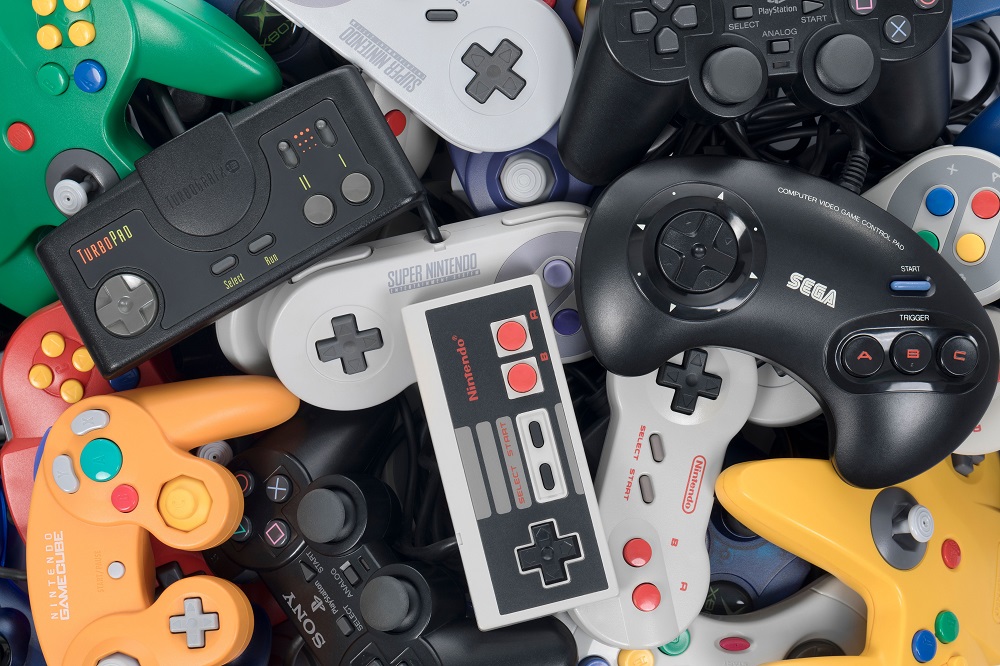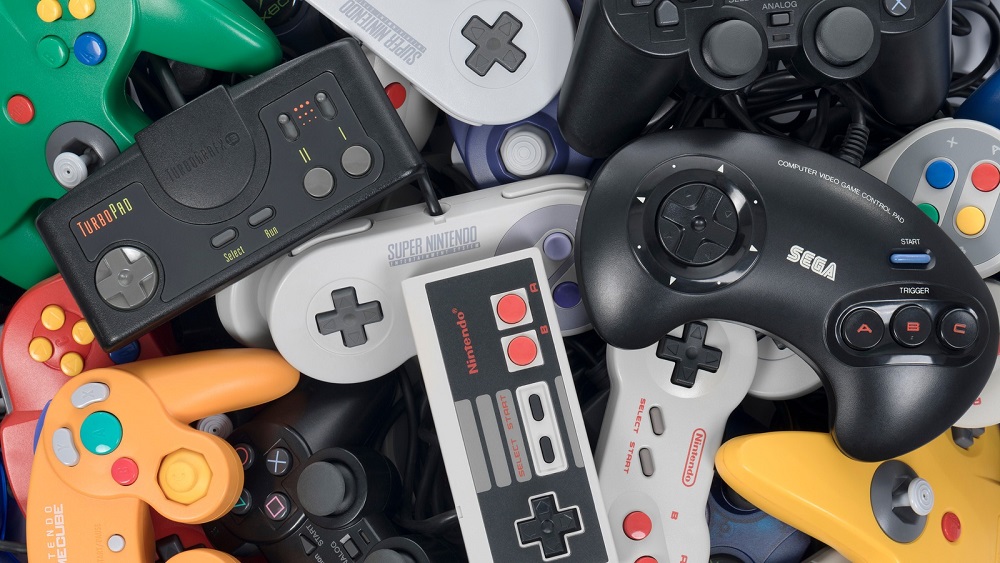Before analog sticks and haptic feedback became standard, before “ergonomics” was even a buzzword — retro gamers were already shaping their thumbs around strange, iconic pieces of plastic.
From sharp-edged rectangles to curvy masterpieces, controllers defined how we played. They weren’t just input devices; they were extensions of our hands, our habits, and our muscle memory.
At Oldies Nest, we’re ranking some of the most beloved (and infamous) retro controllers by comfort — not just by how they looked, but how they felt.
1. Super Nintendo (SNES) Controller – The Timeless Template

The SNES controller is a masterclass in design simplicity. It refined the NES layout by adding rounded grips, more responsive buttons, and — most importantly — the first introduction of shoulder buttons.
Why It Worked
- Smooth, comfortable curves fit perfectly in both small and large hands.
- Face buttons had just the right travel distance.
- The symmetrical design felt intuitive across genres.
It became the blueprint for all modern controllers, inspiring layouts from PlayStation to Switch.
As discussed in Why the NES Controller Became the Standard, Nintendo didn’t just create a new way to play — they created muscle memory for an entire generation.
2. Sega Genesis 6-Button Controller – Fighter’s Favorite
The early Genesis controller (3-button) was fine, but the 6-button version perfected Sega’s design philosophy: sleek, fast, and functional.
Why It Worked
- Its curved, slightly elongated body fit naturally into the palms.
- The six-button layout was ideal for Street Fighter II and action titles.
- The D-pad had excellent tactile feedback for precision control.
While not as “universal” as the SNES controller, the Genesis 6-button pad felt built for competition.
Many fighting-game fans still swear by it — and its design DNA can even be felt in modern retro-inspired pads like the 8BitDo M30.
3. PlayStation DualShock – The Ergonomic Revolution
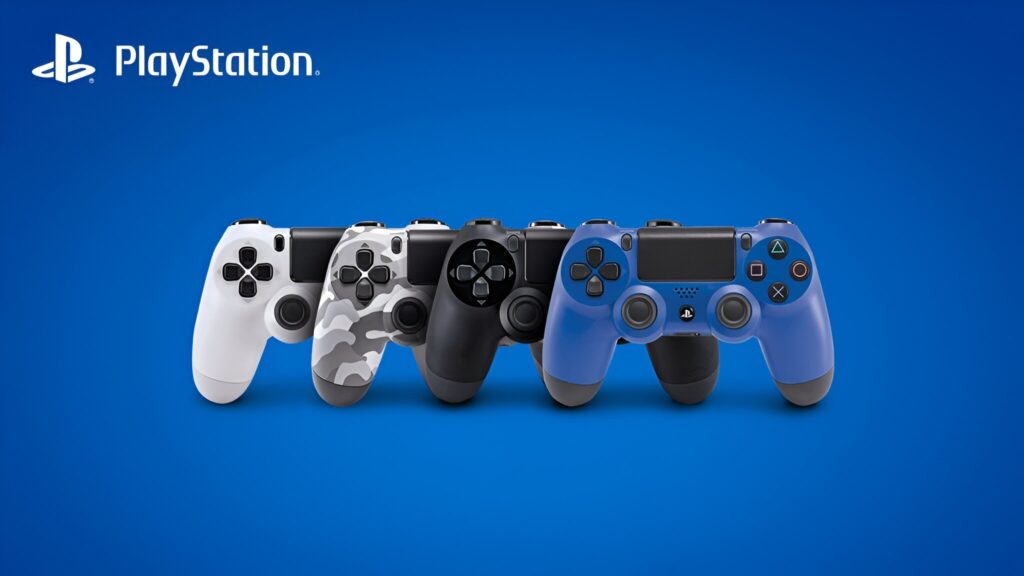
When Sony released the DualShock in 1997, it redefined controller comfort forever.
Why It Worked
- Dual analog sticks enabled fluid movement in 3D spaces.
- Vibration feedback created tactile immersion.
- Its grips molded naturally to human hands — a first for consoles.
It wasn’t flashy, but it was perfect. The DualShock’s shape became so iconic that even the PlayStation 5’s DualSense still pays homage to it today.
For many, the DualShock was where controllers stopped being “tools” and started becoming extensions of the player’s body.
4. Nintendo GameCube Controller – Weirdly Wonderful
At first glance, the GameCube pad looks alien — asymmetrical buttons, a tiny D-pad, and oddly colored buttons. But hold it for five minutes, and it makes sense.
Why It Worked
- Sculpted grips perfectly fit the human hand.
- The large green A button felt instantly natural as the focal point.
- Shoulder triggers had satisfying analog resistance.
Gamers still use the GameCube controller for Super Smash Bros. tournaments today — a testament to its comfort and precision.
As explored in GameCube: Nintendo’s Quirky Powerhouse, the system may have struggled commercially, but its controller design remains one of Nintendo’s best.
5. Sega Saturn Controller – The Hidden Gem
Often overshadowed by its console’s struggles, the Sega Saturn controller deserves far more credit.
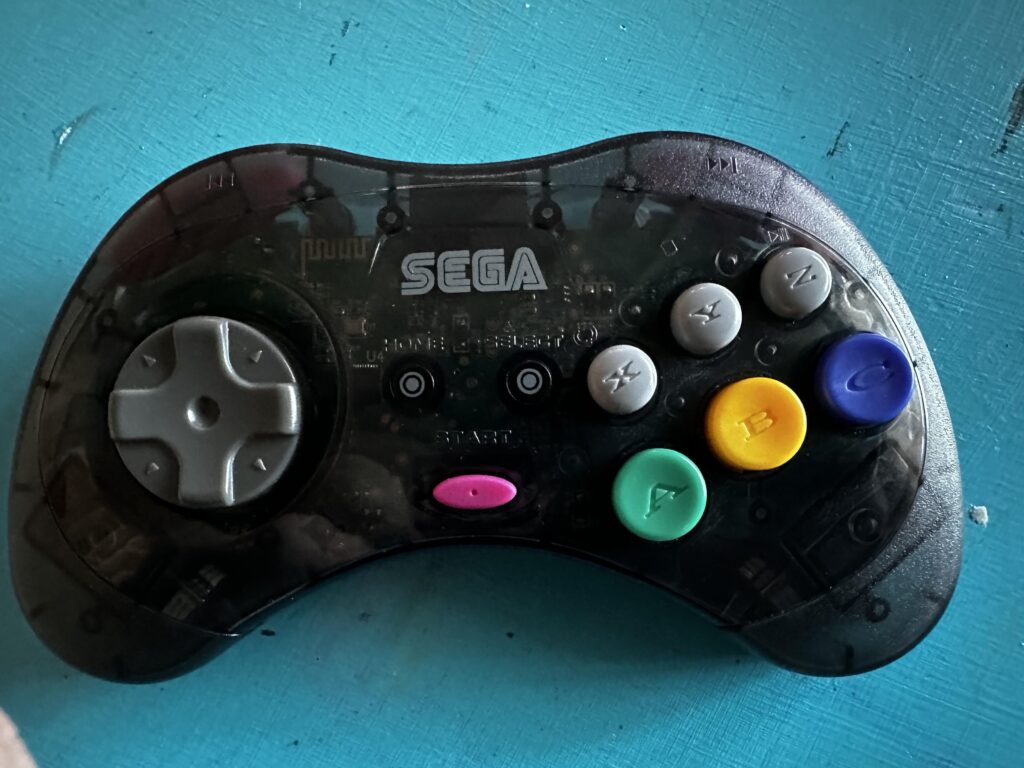
Why It Worked
- A large, smooth D-pad with perfect diagonals.
- Responsive face buttons with a satisfying click.
- A slim form factor that rested easily in the hands.
Its Japanese variant is especially praised by collectors and fighting-game purists. The Saturn pad was a quiet revolution in ergonomic precision — elegant, underrated, and beloved by enthusiasts even today.
6. NES Controller – The Classic Rectangle That Hurt So Good
The NES controller was groundbreaking — simple, efficient, and revolutionary in the early 80s.
But comfort? Not so much.
Why It Worked (and Didn’t)
- Clean, intuitive layout made games accessible to everyone.
- Sharp corners dug into your palms during long sessions.
- No curves or contours — it was a minimalist brick of genius.
Still, its two-button design taught millions how to play. Without it, none of the later ergonomic evolutions would exist.
The NES controller might not feel great, but it means everything.
7. Atari 2600 Joystick – Simplicity in a Stick
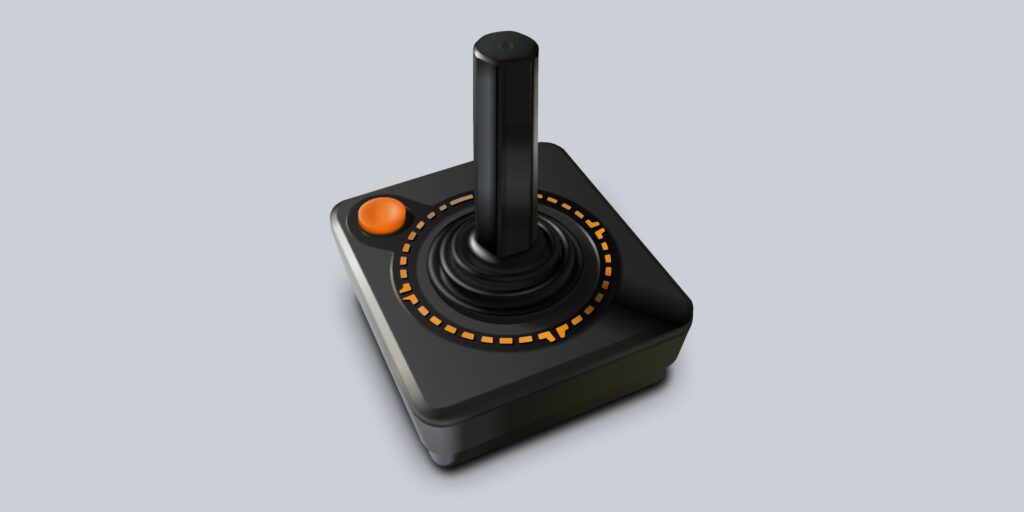
One stick. One button. Infinite nostalgia.
The Atari 2600 joystick is the most recognizable retro controller in history. But let’s be honest — comfort wasn’t the goal here.
Why It Worked
- Built like a tank — practically indestructible.
- The short throw of the stick gave crisp digital input.
- The single red button defined “press to play.”
Yet after a few hours of Pac-Man or Space Invaders, your wrist probably begged for mercy.
Still, this controller taught an entire generation how to “play video games.” Without it, the rest of this list wouldn’t exist.
8. Nintendo 64 Controller – The 3-Handled Experiment
Ah, the infamous trident. Loved by some, loathed by others.
Why It Worked
- The world’s first analog stick for 3D movement.
- Modular grip options — one controller, three play styles.
- The “Z trigger” introduced intuitive aiming mechanics.
Why It Didn’t
- The middle handle confused newcomers.
- The analog stick wore out easily.
- Its size wasn’t ideal for all hand types.
Still, for Super Mario 64 and GoldenEye 007, the N64 controller was magic. It might not win for comfort, but it wins for boldness.
9. Dreamcast Controller – Ambition Over Comfort
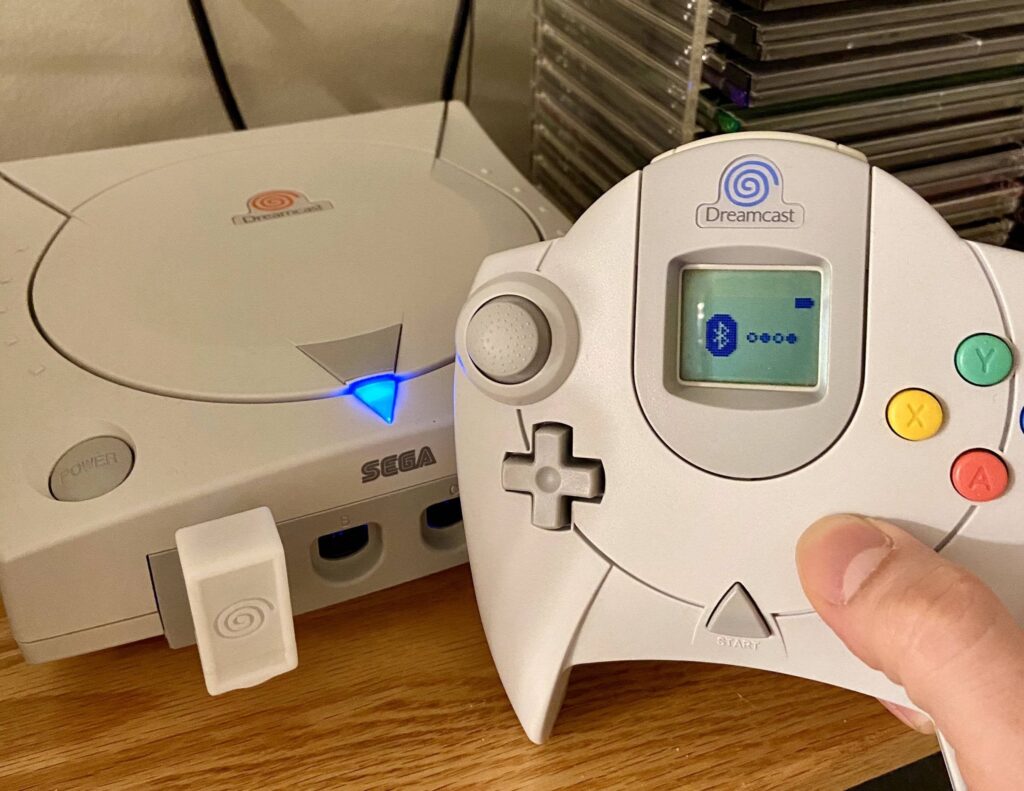
Sega’s Dreamcast controller was ahead of its time — and behind it, all at once.
Why It Worked
- First console controller with built-in screen support via the VMU.
- Analog triggers felt smooth and satisfying.
- A futuristic look that screamed innovation.
Why It Didn’t
- Bulky shape and awkward wire placement.
- Poor grip comfort for long sessions.
It wasn’t perfect, but like the Dreamcast itself, it was a bold experiment. The Dreamcast pad paved the way for features that would later become standard.
10. TurboGrafx-16 Controller – Compact but Cramped
NEC’s TurboGrafx-16 controller was essentially a more polished version of the NES pad.
Why It Worked
- Responsive D-pad and two well-spaced action buttons.
- Integrated turbo switches — a rarity for the time.
Why It Didn’t
- Flat, rigid design wasn’t comfortable for extended play.
- Short cord limited mobility.
It was efficient but unremarkable — a utilitarian device in an age of experimentation.
Still, for R-Type or Bonk’s Adventure, it got the job done.
The Science of Comfort: Why Some Controllers Age Better
Comfort is both physical and psychological. Retro gamers who grew up gripping these controllers often still find them comfortable — not because of their design, but because of muscle memory.
The human brain associates nostalgia with physical touch. Holding a controller you grew up with feels natural because your hands remember it.
That’s why some collectors display their controllers like trophies — tangible proof of the joy they once held. Comfort isn’t always about ergonomics. Sometimes, it’s about emotional familiarity.
Modern Comfort, Retro Spirit
Today’s controllers — like the Xbox Series X pad or the DualSense — owe everything to their ancestors.
But many gamers still prefer the tactile authenticity of retro designs.
Companies like 8BitDo, Hyperkin, and Retro Fighters now remake classic controllers with modern comfort tweaks:
- Softer grips
- Bluetooth support
- Repositioned buttons
It’s the perfect blend of nostalgia and modernity — the past reborn for the present.
Conclusion: The Feel That Defined the Fun
Retro controllers were more than tools — they were companions.
They pinched our thumbs, cramped our hands, and sometimes gave us blisters… but we loved every moment.
Each design told a story: of experimentation, innovation, and the growing pains of an industry learning how we play.
Comfort isn’t just physical — it’s emotional. It’s that familiar plastic curve in your hand, that click of a D-pad that feels like home.
Because even if technology has evolved, true comfort in gaming will always come from what we grew up holding.
